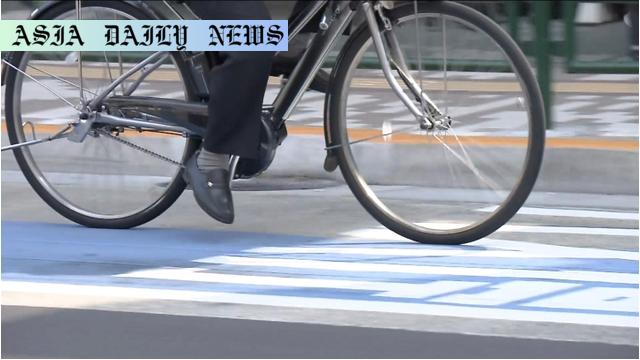Cyclists face fines for traffic violations; new rules clarify proper use of sidewalks.
- Key Point 1: A new fine system for cyclists starts on April 1, 2026, in Japan.
- Key Point 2: Cyclists can pay blue-ticket fines for minor traffic violations.
- Key Point 3: Fines range from 3,000 yen to 12,000 yen based on infractions.
- Key Point 4: Exceptions are in place for younger, elderly, and safety cases on pedestrian paths.

Japan’s New Fine System for Cyclists: An In-depth Overview
Introduction to the New Regulations
The Japanese government has announced a groundbreaking new fine system targeted at cyclists, aimed at ensuring greater adherence to traffic laws and fostering safer shared road use. Scheduled to go into effect on April 1, 2026, this system introduces a series of penalties for minor infractions by individuals on bicycles. At its core, the initiative seeks to promote road safety, encourage compliance with legal provisions, and regulate the often-overlooked behavior of cyclists on public roads and paths.
The “Blue-ticket” Fines Explained
Central to the new regulation is the introduction of “blue-ticket” fines for minor traffic violations. This streamlined system allows offenders to avoid potential legal indictments by paying a predefined financial penalty. Reflecting its efficiency and non-intrusive nature, the blue-ticket fine system is expected to act as both a deterrent and a practical solution to escalating minor legal disputes related to road use. These fines also aim to educate offenders about safe cycling habits while offering an opportunity for rehabilitation outside the courtroom. Notably, a total of 113 violations have been explicitly mentioned under this new regulation.
Breaking Down the Fines
The fines encompass various common infractions committed by cyclists. Specifically, individuals using mobile phones while cycling will be fined 12,000 yen, equating to approximately $83. Similarly, cyclists ignoring traffic signals or traveling in the wrong direction will incur a fine of 6,000 yen (around $41). Other instances, such as riding two abreast, will result in a lighter fine of 3,000 yen (approximately $21). These penalties reflect a pragmatic yet firm approach, emphasizing the need for personal responsibility while cycling in increasingly congested urban environments.
Exceptions and Public Concerns
The public response to certain aspects of these regulations has been mixed. Some citizens argue that cyclists should be exempt from fines for using pedestrian paths. The National Police Agency has clarified, however, that existing rules necessitate cyclists to use roads rather than sidewalks unless specific exceptions apply. These exceptions include individuals below the age of 13 or above the age of 70, or when vehicular traffic poses significant risks. Cyclists utilizing pedestrian paths will avoid penalties unless their actions endanger pedestrians or involve excessive speed.
Government Response and Awareness Initiatives
To ensure transparency and satisfactory compliance, Japanese police officials have pledged to raise awareness about the finer details of these regulations. Public campaigns will focus on educating cyclists regarding their obligations under revised laws while dispelling common misconceptions. Authorities aim to underscore the importance of this measure as a cornerstone of a comprehensive strategy to improve road safety for all users within densely populated areas, particularly in cities where pedestrian interactions with cyclists are frequent.
Conclusion: A Step Towards Safer Roads
The introduction of Japan’s fine system for cyclists reflects the government’s commitment to enhancing road safety through inclusive and progressive legal mechanisms. By targeting minor infractions and addressing public concerns, the authorities are balancing enforcement with empathy. The broader implication of such a roadmap indicates a safer, more harmonious integration of cyclists into urban settings while fostering mutual respect among motorists, cyclists, and pedestrians.



Commentary
A Necessary Move for Safer Roads
Japan’s introduction of a new fine system for cyclists is a commendable step towards addressing long-standing challenges associated with shared road usage. As cycling increases in popularity as an efficient and environmentally friendly mode of transport, the need for clear and enforceable safety measures becomes increasingly evident. This revised approach, while potentially controversial, is an effective means of instilling discipline and responsibility among cyclists who share public spaces with pedestrians and vehicles.
Balancing Enforcement and Public Sentiments
The government’s decision to impose fines for specific infractions strikes a delicate balance between maintaining public safety and respecting individual freedom of movement. However, the inclusion of exceptions for younger and elderly cyclists, as well as those navigating unsafe vehicular traffic, showcases a thoughtful and adaptive policy-making process. Nevertheless, concerns raised by the public regarding fines for pedestrian path usage reflect broader disagreements over how cycling rules should be regulated. Moving forward, ongoing dialogue between authorities and citizens will be crucial to ensuring that these laws remain practical, fair, and widely accepted.
Looking Towards a Safer Future
While the financial penalties associated with these violations may appear steep to some, they serve as a powerful motivator for better compliance with traffic laws. This initiative has the potential to set an important precedent for other nations grappling with similar issues arising from the integration of bicycles into urban ecosystems. A coordinated effort to educate the public, coupled with consistent enforcement by authorities, can ultimately improve safety standards and contribute to a cohesive transportation strategy.
Final Thoughts
By implementing these fines, Japan is not merely targeting rule-breakers; it is sending a clear message to all road users about the shared responsibility of ensuring safety and harmony on public roads. In doing so, the nation underscores the importance of proactive governance that anticipates evolving urban challenges and provides structured, long-term resolutions.